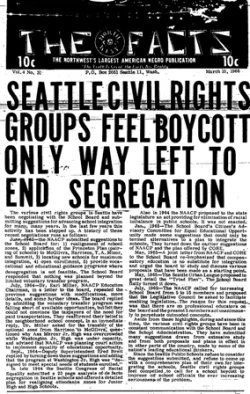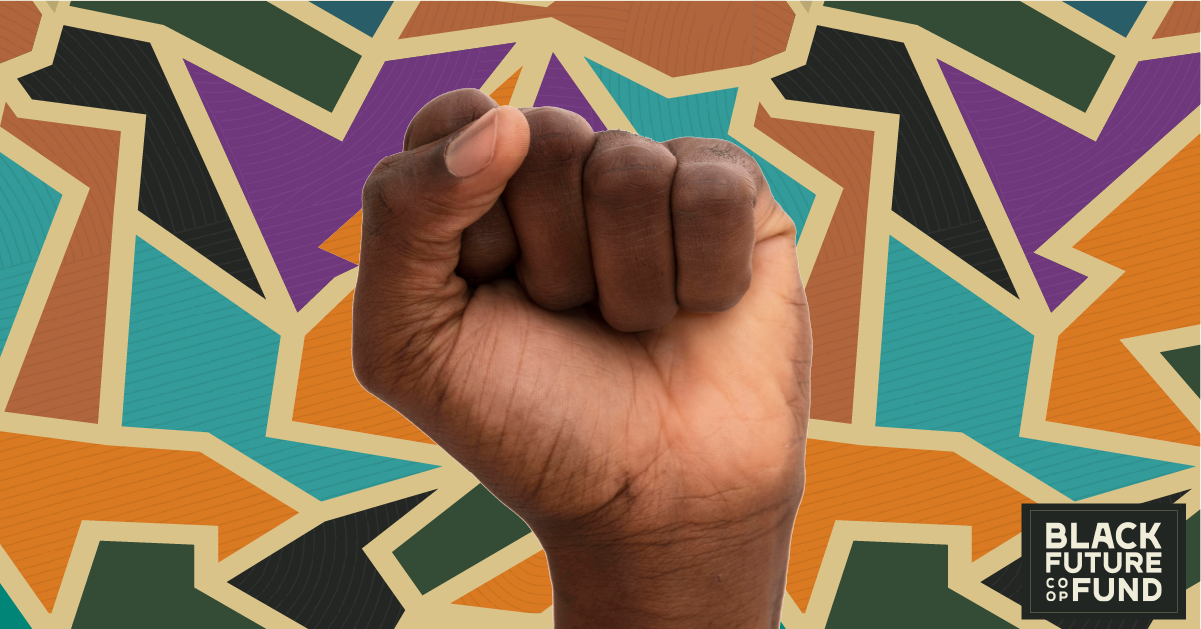Our power is activated in community.
The spaces Black people have curated, built, and shared across time and distance have enabled that activation.The love cultivated in each of those hubs has supported our people’s perseverance and our self-preservation.
The organizing efforts of community and civil rights groups to desegregate the education system in Seattle in the 1950s and ‘60s are testaments to what this love and activation can do. Following World War II, our elders and ancestors came to Seattle eager to unlock and enjoy new possibilities. Their avid search for jobs and better opportunities eventually made us the largest minority group in the city. Despite our presence and cultural contributions, it was legal to discriminate against us and other people of color when hiring, leasing apartments, selling homes, and providing services until 1968. Together, these policies confined us to its Central District area, where, by 1960, nearly 80 percent of Seattle’s Black population lived.

An example of the persistent link between urban planning and systemic inequality, the concentration of us in one place made it easy for the city’s administration to deprive its Black residents of the social services that they were entitled to. The opposite of reparations and redress, Seattle’s administration withheld their funding from Black communities. The city’s racially segregated education system produced nearly 100 well-funded schools for its white students. It also produced 13 understaffed, substandard schools where 10,000 Black students were denied access to a high-quality public education.
In the wake of the Supreme Court’s recent repeal of race-based affirmative action — a landmark decision that will result in less access to learning spaces for Black people — we are reminded of the collaborative action done by Seattle’s National Association for the Advancement of Colored People (NAACP) chapter, the Congress for Racial Equality (CORE), the Central Area Civil Rights Committee (CACRC), the Central Area Motivation Program (CAMP), the Urban League of Metropolitan Seattle, and Black churches done in the 1970s here in Washington state. We evoke these groups’ precedent of togetherness and relentlessness in the face of our new challenges across the state, country, and diaspora. We will not be deterred. Through our ancestors, we inherit strength, and as future ancestors, we enlist that same ferocity in our present-day work to shape, mold, and secure expanded possibilities for Black Washingtonians and generations after us.
We are our elders’ work and our ancestors’ future.
Together, Black-led groups in Seattle and other parts of Washington state disrupted the institutional racism that lived in the city and state’s education system, and it was love in action. Vital to this work were information-sharing campaigns sustained by Black-owned newspapers like The Facts, who expressly named the racial inequality in Seattle and documented the ongoing work done by community groups like the NAACP, CORE, CACRC, Urban League, and Seattle’s First African Methodist Episcopal (AME) Church seeking to challenge it.

Seattle’s NAACP chapter, then led by E. June Smith, submitted letters of appeal. CORE shared an analysis of school segregation, highlighting its scope and impact as well as a plan to eliminate it. The Urban League, in May 1965, put the Triad Plan forth, which would have paired white schools with ones attended by Black students, ensuring a multiethnic education for all students and more equitable school funding.
In March 1966, after fruitless years of demands and no change to a system that wasn’t working, the Seattle School Boycott happened. Calling for a timely plan for integration, compulsory in-service, and anti-racist training for all school staff, community groups requested parents keep their children out of Seattle public schools for two days. The boycott, organized through city-wide leafleting and made possible through coalition-building, activated Black Washingtonians and brought white allies to the work.
With school shifting for two days also, Freedom Schools, a model developed by CORE members in Mississippi, became sites of learning for protesters’ children. Hosted in Black churches, temples, and community centers, Freedom Schools taught about Black history, life, and culture, engaging 3,000 young Black and white learners in a new way of doing education. CAMP volunteer, Roberta Byrd Barr (for whom the organization is named after today as Byrd Barr Place), was one of four Seattle Public School teachers leading the boycott and headed one of the Freedom Schools.
Pivotal moments and efforts in local history like this one made possible through our ancestors’ collective organizing made the state’s promise to “make ample provision for the education of all children residing within its borders, without distinction or preference on account of race, color, caste, or sex” later appear in Washington’s constitution. Folded in the future they were shaping and demanding for us is an inherited duty for us to manifest it fully, holding the state accountable and ensuring services provided by the institutions our labor built reach and uplift us and ours too.
Our work as future ancestors
Public education in present-day Seattle makes clear that equal education is not yet a reality. With racist practices impacting who lives where and how much money a school district has to spend, and formal integration initiatives halted in 2007, Seattle’s current education system mirrors the segregated one our elders and ancestors mobilized to disrupt and eliminate. We still see stark racial disparities in funding, testing scores, and student outcomes. Seattle schools are currently six times more segregated than they were 30 years ago.
The work that Black-led groups did before us provides learnings for us as we organize and contend with the structural harm in education systems across the state. We mirrored their precedent of power sharing with the participatory approaches that made the Black Well-being: Moving Toward Solutions Together report possible. First released nearly a year ago, the report is a mirror of our community’s brilliance, folding in ideas and insights uncovered in focus groups and through surveys that engaged over 1,000 Black Washingtonians. In the Black Well-being report, our activation of community outlined in its calls to action and demands reflects that of our ancestors’ before us. Each one moves us closer to a state supportive of our people’s prosperity in education and beyond.
Your call to action
All of us have a duty to work toward a liberated future for our descendants who will inherit the world we leave them. In our 2023-2025 Strategic Framework, we outline the Black Future Co-op Fund’s duty, sharing how we plan to support Black Washingtonians’ connectedness and generational prosperity, and amplify truthful narratives about our people as we shift paradigms that enable impactful giving.
We invite you reading this to lean into the duty too and the work mapped out in the Black Well-being report that asks for the commitment and participation of all of us. With the Black Well-being Report and upcoming audiobook, we write our future, truthfully naming how things are while elevating our genius and wisdom. Sign up to be notified when the audiobook drops and to stay updated with the Fund’s upcoming listening tour, kicking off this fall in Thurston!
